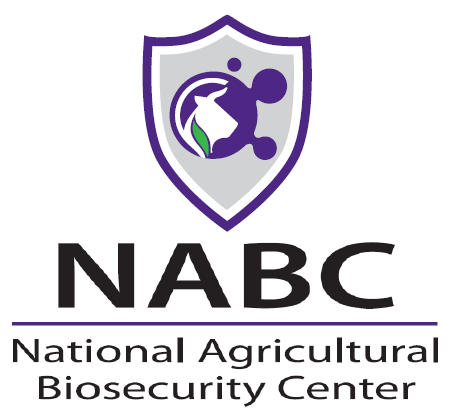September 23, 2024
K-State's National Agricultural Biosecurity Center awarded grants to enhance animal disease preparedness, response
Submitted by the Office of the Vice President for Research

The National Agricultural Biosecurity Center, or NABC, at Kansas State University has been awarded two new grants by the United States Department of Agriculture Animal and Plant Health Inspection Service through its National Animal Disease Preparedness and Response Program. The projects aim to enhance the preparedness and response capabilities for animal disease outbreaks in Kansas and across the U.S.
"These grants will bolster the ability to manage and mitigate the impacts of animal disease outbreaks in Kansas and the broader U.S. livestock industry," said Marty Vanier, director of the NABC.
The first project, "County Emergency Management Agency Outreach and Education on State Animal Disease Outbreak Planning and Preparedness," focuses on improving the coordination and integration of county emergency management agencies with state animal disease response plans. The effort aims to preview top-down guidance on state planning and priorities; facilitate actionable planning and preparedness activities at county levels; inform agencies of available training and education resources; build community stakeholder partnerships between Research and Extension and on-campus faculty expertise; and encourage interagency communication and coordination.
"The Kansas Department of Agriculture's Emergency Management Program has allied with NABC to contribute experience and understanding of stakeholders' interests in disasters and emergencies that may affect the state's food and agriculture security, as well as the protection of Kansas' agricultural critical infrastructure," said Ethan Scarpelli, emergency management specialist at the Kansas Department of Agriculture.
The initiative, funded by a $127,240 award, will involve regional presentations, training sessions and participation in the Kansas Emergency Management Association's annual conference.
The second project, "Quantifying Cattle Movement and Determining Infrastructure and Critical Control Points for a 12-State Region," will analyze cattle movement patterns and identify critical control points to enhance planning for permitted movement during animal disease outbreaks. The NABC has engaged with Decision Innovation Solutions, or DIS — an economic research and analysis firm specializing in agriculture and related industries — to source, curate and analyze research and data needed to accomplish deliverables for the project.
DIS will use commodity flow methodology to develop a network analysis of intra- and inter-state routes that are critical for cattle movement, and then simulate foreign animal disease outbreak scenarios to test state permitting systems. The $152,893 project aims to provide state and federal animal health officials with data to improve disease traceability and ensure business continuity during outbreaks.
"The initiative aims to model and quantify cattle movement within a multistate, agriculturally significant region, enhancing the planning for permitted movement during animal disease outbreaks," said Spencer Parkinson, president and CEO of DIS.
According to researchers, NABC's work has significantly improved agricultural emergency response capabilities, supported by past grants and projects, including:
- Conducting regional foreign animal disease tabletop exercises.
- Analyzing livestock movement permitting scenarios among High Plains states.
- Creating biosecurity toolkits for fairs and exhibitions.
- Developing emergency management frameworks for land-grant institutions.
To date, NABC has received six National Animal Disease Preparedness and Response Program grants totaling more than $700,000 to enhance the nation's preparedness for critical animal health threats.
